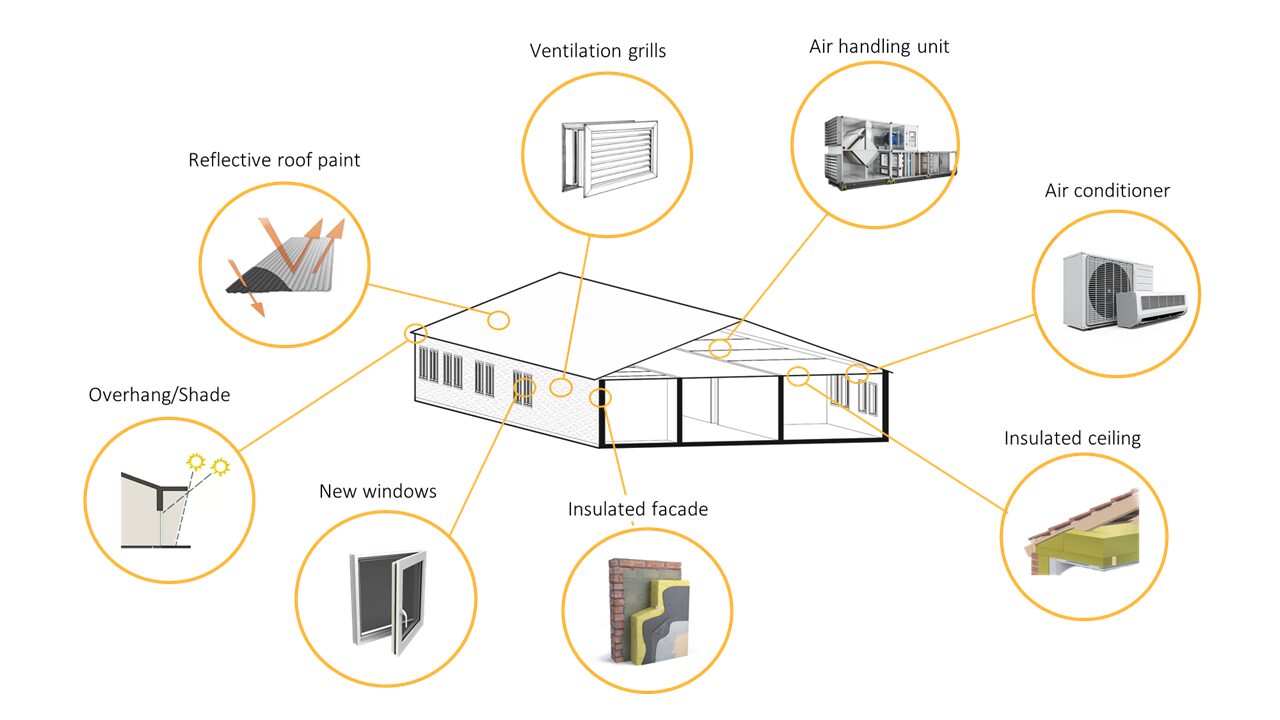Walk into a maternity ward in rural Zimbabwe on a summer afternoon, and you’ll understand something instantly: buildings matter. Health facilities that provide maternity and neonatal care with no insulation, no cooling, and no escape from the sun can quickly become saunas.
Heat rises off thin metal roofs. Air barely moves. Temperatures indoors creep past 35°C — sometimes hitting 40, including where women are giving birth. And there’s often no air conditioning. Often, not even a fan.
In a situation like that, “The building itself becomes part of the exposure”, said Dr Jørn Toftum, an indoor environmental researcher at the Technical University of Denmark and HIGH Horizons partner.
He is leading HIGH Horizons research that asks: How can we make health facilities buildings capable of beating the heat?
Dr Toftum explained: “Beating the heat doesn’t start with air conditioning. It starts with rethinking how we build”.
Why health facilities need to adapt to beat the heat
We tend to think of heat as an outdoor problem. But health workers and patients spend most of their time indoors — and in hot climates, those indoor spaces can be even more stressful than the sun outside.
In Zimbabwe and South Africa, HIGH Horizons researchers are monitoring temperatures inside health facilities that provide maternal and newborn care. Here’s what they’ve found:
- Indoor temperatures regularly reach 35–40°C, well beyond the World Health Organization threshold for heat stress.
- Buildings heat up fast, and cool down slowly. There’s often a lag of several hours between outdoor and indoor temperatures.
- Most facilities in South Africa and Zimbabwe lack even basic ventilation. Some are made with thin walls, metal roofing, and single-pane glass — materials that allow heat to penetrate into the building.
And the people inside? They include health workers trying to focus, mothers trying to breastfeed, and babies just hours old.
What actually works?
Air conditioning is expensive, energy-intensive, often unreliable in areas with unstable electricity, and a source of carbon emissions. Given these constraints, Dr Toftum and his colleagues have been testing passive solutions: low-cost interventions that may keep buildings cool without relying on electricity.
Here are four that show promise:
- Reflective roofing
A coat of white or reflective paint on the roof can bounce heat back into the atmosphere. It’s simple, cheap, and effective — but requires maintenance over time to stay clean and functional. - Improved ventilation
By adding vents or using high-low openings, facilities can promote natural air circulation, cooling buildings at night and delaying daytime heat buildup. - Thermal insulation
Insulating roofs and walls slows heat transfer. It’s a technique used for cold climates — but works just as well in reverse. - Shade and greenery
Trees take time to grow, but they offer long-term cooling benefits. Even simple shading structures can reduce indoor temperatures significantly.
Each of these on its own has a modest effect. But together, HIGH Horizons research suggests they can make a real difference — especially as global temperatures rise.
Looking ahead: can buildings keep up?
Dr Toftum and his team ran simulations of temperature levels in the facilities in Zimbabwe for the year 2080, using climate models predicting a 3°C global temperature rise. Even in those hotter futures, they found that a combination of passive cooling strategies could reduce dangerous indoor temperatures significantly.
The interventions could reduce heat stress and lower health risks — especially among vulnerable pregnant and postpartum women, infants, and children.
Why this matters now
Climate change isn’t waiting. And health systems — especially those in the Global South — need support adapting now. Not every health facility can afford solar panels and HVAC systems, but many can afford paint, vents, and a bit of insulation. Dr Toftum said: “We can’t make it perfect. But we can make it better”.



